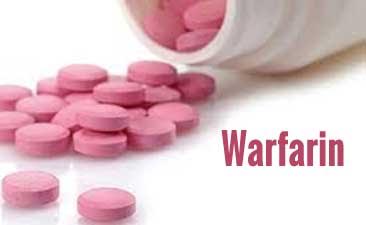- Home
- Editorial
- News
- Practice Guidelines
- Anesthesiology Guidelines
- Cancer Guidelines
- Cardiac Sciences Guidelines
- Critical Care Guidelines
- Dentistry Guidelines
- Dermatology Guidelines
- Diabetes and Endo Guidelines
- Diagnostics Guidelines
- ENT Guidelines
- Featured Practice Guidelines
- Gastroenterology Guidelines
- Geriatrics Guidelines
- Medicine Guidelines
- Nephrology Guidelines
- Neurosciences Guidelines
- Obs and Gynae Guidelines
- Ophthalmology Guidelines
- Orthopaedics Guidelines
- Paediatrics Guidelines
- Psychiatry Guidelines
- Pulmonology Guidelines
- Radiology Guidelines
- Surgery Guidelines
- Urology Guidelines
EHRA's Update on Practical Guide for NOACs

EHRA has released a new version of the Practical Guide on the use of non-vitamin K antagonist oral anticoagulants (NOACs) in patients with atrial fibrillation which has been published online in European Heart Journal.The guide, now in its third edition with more than 400,000 copies of previous versions distributed worldwide, was produced by the European Heart Rhythm Association (EHRA), a branch of the ESC.The new document stresses that its aim is not to replace formal guidelines but to help physicians in the correct use of the drugs.
“ESC guidelines state that NOACs should be preferred over vitamin K antagonists, such as warfarin, for stroke prevention in patients with atrial fibrillation, except those with a mechanical heart valve or rheumatic mitral valve stenosis, and their use in clinical practice is increasing,” said first author Jan Steffel.The NOACs, which include the direct thrombin inhibitor dabigatran (Pradaxa; Boehringer Ingelheim) and the direct factor Xa inhibitors rivaroxaban (Xarelto; Bayer/Janssen), apixaban (Eliquis; Bristol-Myers Squibb), and edoxaban (Savaysa; Daiichi Sankyo), have been shown to be at least as safe and effective as vitamin K antagonists (VKAs) like warfarin, but the newer agents come with the advantages of not requiring routine coagulation monitoring and having fewer food and drug interactions.
The guide gives concrete, practical advice on how to use NOACs in specific clinical situations. While companies provide a Summary of Product Characteristics for a drug, there are legal restrictions on the content and the information is often not detailed enough for doctors.
The 2018 edition has several new chapters. One outlines how to use NOACs in particular groups of patients, including those with very low body weight, the very obese, athletes, frail patients in whom there is concern about bleeding, and patients with cognitive impairment who may forget to take their pills.
Another new chapter briefly summarises the correct dosing of NOACs in conditions other than atrial fibrillation, such as prevention of deep venous thrombosis, treatment of venous thromboembolism, and treatment of ischaemic heart disease. “The dosing for each condition is different, which may lead to confusion, so we have outlined this clearly,” said senior author Professor Hein Heidbuchel, who initiated the EHRA Practical Guide in 2013 and an update in 2015.
Updated advice is given on the combined use of antiplatelets and NOACs in patients with coronary artery disease, particularly those with an acute coronary syndrome or patients scheduled for percutaneous coronary intervention with stenting. “We provide guidance around which and how many antiplatelets, for how long, with which NOAC, and at what dose of that NOAC,” said Professor Heidbuchel.
There is also more scientific evidence on the use of anticoagulants around cardioversion. The document gives detailed advice on what to do in patients on long-term NOAC treatment who need cardioversion versus patients newly diagnosed with atrial fibrillation and started on a NOAC before cardioversion.
Since the previous edition of the guide was published, the first NOAC reversal agent has received market approval. Advice is given on how to use idarucizumab – which reverses the anticoagulant effect of dabigatran – when there is acute bleeding, when urgent surgery is required, or when the patient has a stroke. Guidance is also included on andexanet alfa, another reversal agent expected to receive market approval, with the caveat that the instructions on the label should be followed.
Unlike warfarin, NOACs do not require monitoring of plasma levels followed by dose adjustments. The guide describes rare scenarios in which physicians might want to know the NOAC plasma level. One scenario concerns patients undergoing major surgery in whom it is unclear, for example because of other drugs or renal dysfunction, whether the usual practice of stopping the NOAC 48 hours in advance is sufficient. The plasma level of the NOAC could be measured just before surgery to confirm that the anticoagulant effect has waned.
The chapter on drug-drug interactions has been expanded with anticancer and antiepileptic drugs, Dr Steffel added: “While this is mostly based on potential pharmacokinetic interactions and case reports, it is the first of its kind. This is likely to be adapted and become more complete over the years as our experience increases at this new frontier.”
For further reference log on to : https://doi.org/10.1093/eurheartj/ehy136

Disclaimer: This site is primarily intended for healthcare professionals. Any content/information on this website does not replace the advice of medical and/or health professionals and should not be construed as medical/diagnostic advice/endorsement or prescription. Use of this site is subject to our terms of use, privacy policy, advertisement policy. © 2020 Minerva Medical Treatment Pvt Ltd